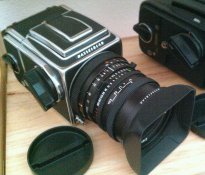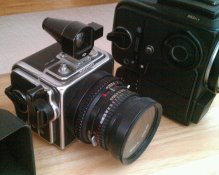I know how to use FLE ring and Focus ring when photographing a subject within 4 meters away from camera. But I need your advices how I can make tack sharp landscape photos from the closest foreground(eg. 1.5 meters away) to the farthest background at infinity.
I have been focusing at Infinity in landscape photography with aperture set between f 16 and 22 based on the Depth of Field Scale analysis. Recently, I bought a Distagon 50mm f/4 CF FLE lens for my Hasselblad 503CX. I am confused how to use two focusing rings in which order to make everything in focus from the closest foreground to the farthest background.
I have been focusing at Infinity in landscape photography with aperture set between f 16 and 22 based on the Depth of Field Scale analysis. Recently, I bought a Distagon 50mm f/4 CF FLE lens for my Hasselblad 503CX. I am confused how to use two focusing rings in which order to make everything in focus from the closest foreground to the farthest background.




 :
: